Global high-mix volume high-speed PCBA manufacturer
9:00 -18:00, Mon. - Fri. (GMT+8)
9:00 -12:00, Sat. (GMT+8)
(Except Chinese public holidays)
Global high-mix volume high-speed PCBA manufacturer
9:00 -18:00, Mon. - Fri. (GMT+8)
9:00 -12:00, Sat. (GMT+8)
(Except Chinese public holidays)
HomePage > Blog > Knowledge Base > SMD Meaning in Electronics
In the rapidly developing electronics industry, everything from smartphones and wearable devices to medical equipment and industrial control systems relies on SMD electronics - an intangible foundation that makes devices smaller, faster and more reliable. Understanding the SMD meaning in electronics is not merely mastering a technical term; it is also the key to understanding how the entire electronics industry achieves leapfrog development through surface mount devices.
So, what exactly does SMD mean?
This article will focus on the SMD meaning and systematically introduce what SMD is, the differences between SMD and SMT, the key characteristics of SMD components, common types and SMD package forms, as well as their application in SMD PCBs.
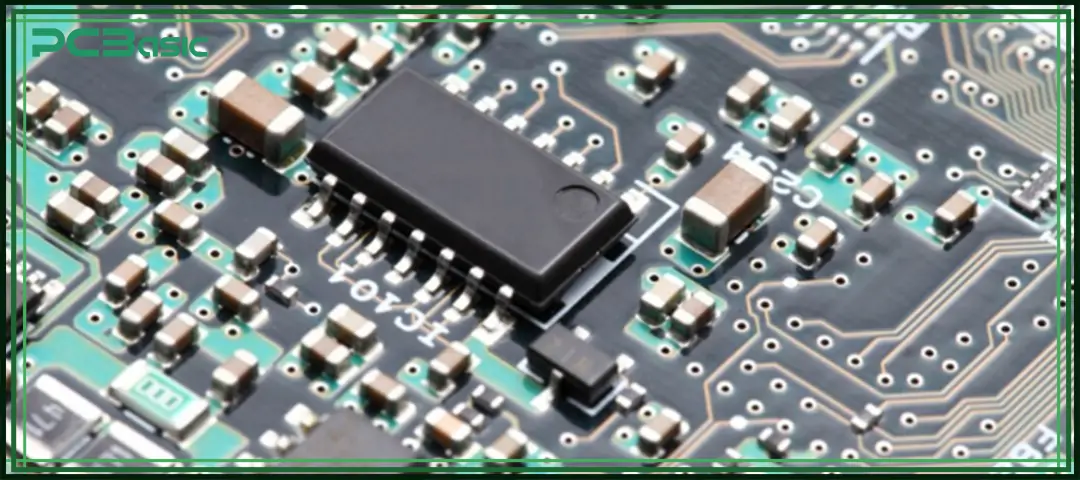
In electronics, SMD is the abbreviation of surface-mount device, which means electronic components directly mounted on the surface of a PCB. It is different from the traditional through-hole technology, as it does not require the pins to be inserted into the holes of the circuit board. This is the core SMD meaning in electronics.
In simple terms, SMD components are common resistors, capacitors, diodes, integrated circuits (ICs), and connectors that are directly mounted to the surface of the PCB and fixed through the reflow soldering process. Using SMD PCB design can realize a smaller circuit board, denser wiring and higher performance.
It is crucial to understand what SMD is, as it is almost applied in all modern electronic manufacturing, from consumer electronics, automotive electronics, to medical devices and industrial control systems. Without these surface mount devices, we wouldn't have today's ultra-thin mobile phones, high-speed network devices or lightweight wearable devices.
The terms SMD and SMT often appear together in the electronics industry, but in fact, they represent two different concepts. Let's clarify this distinction:
|
Term |
Meaning |
Description |
|
SMD |
Surface-Mounted Device |
The actual electronic component soldered onto a PCB surface. |
|
SMT |
Surface Mount Technology |
The manufacturing process used to place and solder SMD components onto PCBs. |
Simply put, SMD refers to the device itself, while SMT describes the process.
When engineers ask "what does SMD stand for?", they refer to the electronic components themselves. When they talk about "SMT meaning", they refer to the production method of mounting these surface-mount devices onto the PCB.
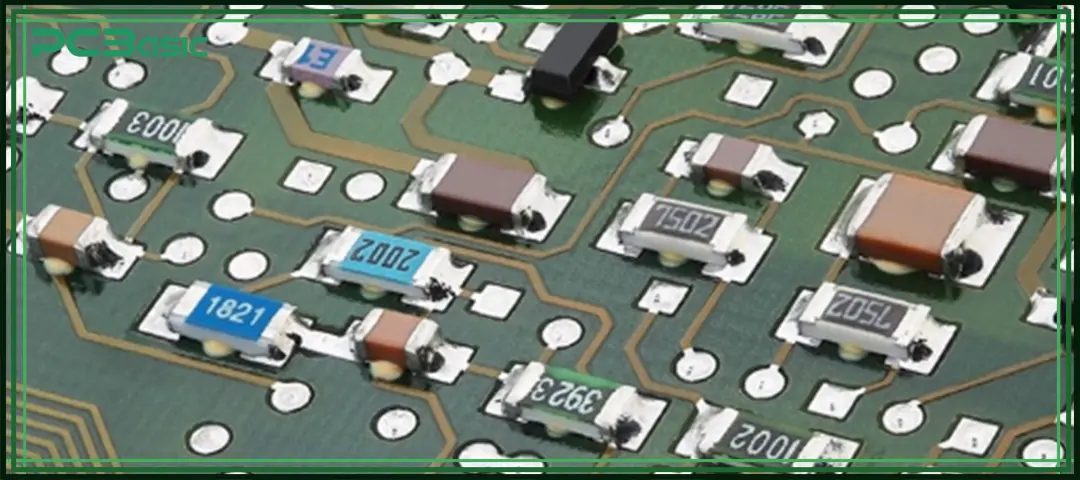
Surface mount components are widely used because they have obvious advantages in terms of performance, reliability and size. The following characteristics are precisely the key to embodying the SMD meaning and are significant to modern electronic design:
Each SMD component is very small and light, allowing the circuit board to accommodate more parts while making the overall size smaller.
Most surface mount devices have almost no pins or very short pins, which can reduce resistance and inductance and make signal transmission faster and more stable.
On a circuit board of the same size, an SMD PCB can accommodate more components, allowing complex circuits to be placed in a very small space.
These surface-mount components are specially designed for SMT technology and are highly suitable for machine mounting and automated production, significantly enhancing efficiency.
Compared with the traditional through-hole soldering, the solder joints of SMD components are firmer and less likely to fall off due to vibration or bending.
There are many types of SMD packages, ranging from extremely small 0201 resistors to large BGA chips. Engineers can flexibly choose according to product requirements.
Overall, these features make it easier for us to understand the true meaning of SMD - it enables electronic products to achieve higher performance in a smaller volume while maintaining robustness, reliability and high-speed operation.
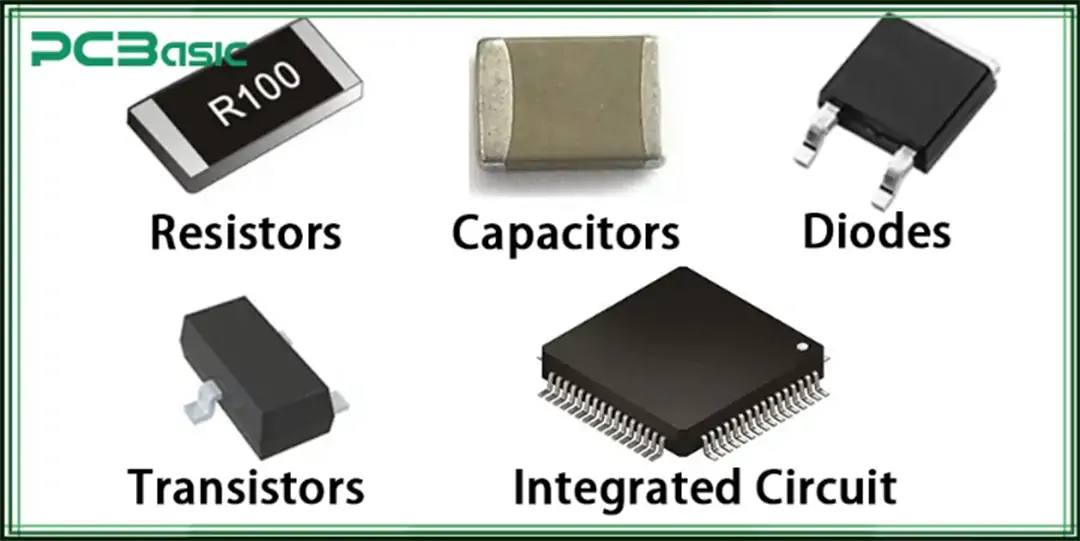
Almost all the electronic components used nowadays can be implemented in the form of SMD components. The following are the most common types, which can usually be seen on an SMD PCB:
|
Type |
Function |
Example Use |
|
SMD Resistors |
Control current and divide voltage. |
Power regulation circuits |
|
SMD Capacitors |
Store energy, filter noise, and stabilize voltage. |
Decoupling and signal filtering |
|
SMD Inductors |
Manage current changes and reduce EMI. |
Power supply circuits |
|
SMD Diodes |
Allow current to flow in one direction. |
Rectifiers, protection circuits |
|
SMD Transistors / ICs |
Switch, amplify, and process signals. |
Logic control, processors |
|
SMD Connectors |
Create mechanical and electrical links. |
RJ45, USB, FFC connectors |
|
SMD LEDs |
Emit light or status indicators. |
Display and indicator systems |
Every surface mount component is driving SMD electronics to become faster, smaller and smarter. Whether you are designing wearable sensors or communication systems, understanding and choosing the appropriate SMD components is the key to achieving efficient and reliable designs.
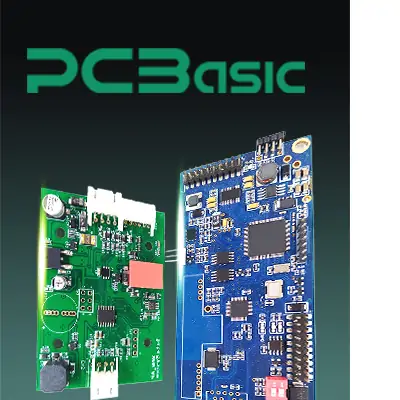
Time is money in your projects – and PCBasic gets it. PCBasic is a PCB assembly company that delivers fast, flawless results every time. Our comprehensive PCB assembly services include expert engineering support at every step, ensuring top quality in every board. As a leading PCB assembly manufacturer, we provide a one-stop solution that streamlines your supply chain. Partner with our advanced PCB prototype factory for quick turnarounds and superior results you can trust.
When engineers discuss the SMD meaning, they often mention the SMD package - that is, the physical shape of the component, which determines how the component is mounted on the circuit board.
|
Package |
Size (Inches) |
Typical Use |
|
0201 / 0402 |
Ultra-miniature |
Smartphones, IoT devices |
|
0603 / 0805 / 1206 |
Standard resistor/capacitor packages |
General electronics |
|
SOIC (Small Outline IC) |
Dual-row lead ICs |
Op-amps, logic gates |
|
QFN (Quad Flat No-Lead) |
Leadless with bottom pads |
Microcontrollers, RF chips |
|
BGA (Ball Grid Array) |
Solder balls underneath |
CPUs, FPGAs, memory modules |
SMD package codes are usually related to their size. For example, the 0805-package resistor indicates a size of 0.08 inches × 0.05 inches. The smaller the package, the more compact the circuit layout can be. But at the same time, it also puts forward higher requirements for surface mount accuracy and reflow soldering control.
Choosing the appropriate surface mount component size can ensure the manufacturability of production, good heat dissipation performance and stable assembly yield - all of which are key factors in guaranteeing the high reliability of SMD PCBs.
To truly understand the SMD meaning in electronics, one must first understand the working principle of SMT. In simple terms, the SMT process is a highly automated and precise procedure used to firmly mount various surface-mount components onto a circuit board. The entire process mainly includes the following steps:
First of all, use a stainless-steel stencil to evenly print solder paste on the pads of the SMD PCB. The thickness of the solder paste and whether it is applied evenly directly determine whether the soldering is firm or not.
Next, the automatic pick-and-place machine will precisely place each SMD component in the designated position. The machine can place tens of thousands of components per hour, with high speed and precision. This step lays a solid foundation for the subsequent soldering.
The circuit board with the components mounted will be sent into the reflow oven. The solder paste is melted under high temperature, and the surface mount devices are firmly mounted onto the PCB. The entire heating process requires strict temperature control to prevent components from being damaged by baking.
After soldering, the circuit board needs to go through multiple inspections: using 3D solder paste inspection (3D SPI) to check if the solder paste printing is qualified; using automatic optical inspection (AOI) and X-ray inspection (X-ray) to check if there are any problems with the component positions and solder joints, especially the hidden solder joints in SMD packages like BGA; finally, functional tests should be conducted to ensure that the entire circuit board can work properly.
It can be said that the meaning of SMT is not merely a process; it is related to the reliability and scalability of the entire production. It is precisely because of SMT technology that factories can efficiently produce tens of thousands of SMD PCBs with consistent precision and reliable performance.
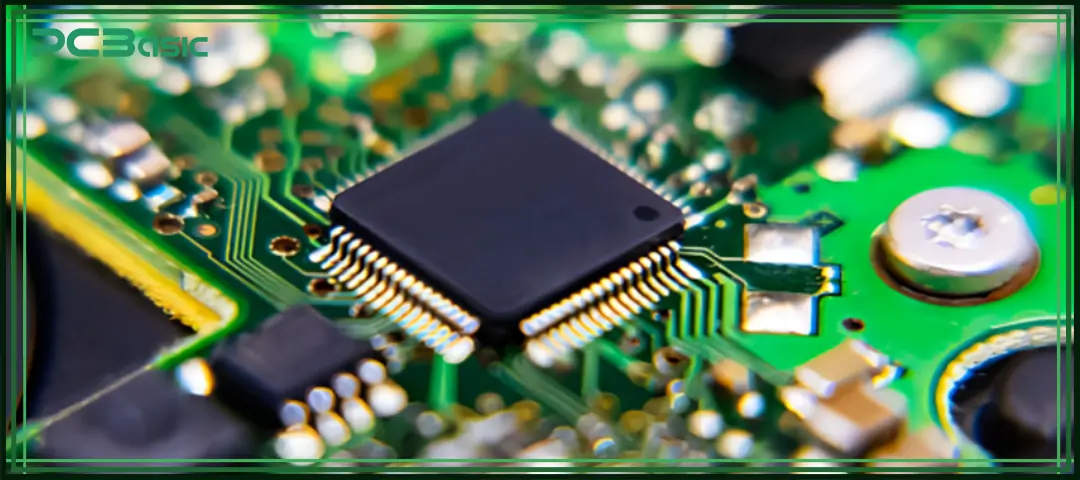
The reason why SMD electronics has become mainstream in today's manufacturing industry is that surface mount devices bring obvious performance and production advantages:
SMD components are small in size, light in weight, and occupy less space on the circuit board, which can make products thinner, lighter and more aesthetically pleasing.
On the SMT assembly lines, the machines can mount tens of thousands of surface mount components per hour, which is much faster than traditional processes and significantly improves production efficiency.
Because the component connection distance in SMD PCBs is shorter, there is faster signal transmission, less interference, and lower energy loss.
Automated production combined with a smaller board surface design can save materials and labor, making the overall manufacturing cost lower.
SMD solder joints are more robust and have better shock resistance, remaining stable and reliable in harsh environments such as high temperatures and vibrations.
There are many types of SMD packages, ranging from micro-resistors to high-performance chips, which can not only meet the requirements of low-power products but also be suitable for high-speed communication equipment.
As long as the process is well debugged, the manufacturer can easily shift from prototype production to large-scale mass production, and the product quality remains consistent.
Overall, the SMD meaning is not merely that components have become smaller, but rather represents a new stage in electronic manufacturing towards automation, precision and miniaturization.
Overall, the SMD meaning in electronics represents the era of transformation in electronic manufacturing from the traditional cumbersome and manual plug-in assembly method to miniaturization, automation and high-performance design. When you understand what SMD stands for and how it differs from SMT, then it can be understood why almost all electronic devices nowadays - from medical sensors to automotive control modules - cannot do without SMD components.
SMD electronics technology continuously drives technological innovation through high efficiency, miniaturization and high reliability. For engineers and manufacturers, mastering the relationship between SMD and SMT is the key to achieving modern, efficient production.
At PCBasic, we focus on advanced SMD PCB manufacturing equipped with fully automatic SMT production lines, 3D solder paste inspection, automatic optical inspection and X-ray inspection systems to ensure that every surface mount component can be precisely mounted and soldered.
Welcome to contact us to experience reliable and high-quality SMD electronics mounting services ranging from rapid prototyping to complete turnkey production.
1. What does SMD stand for?
SMD stands for Surface-Mounted Device — a component soldered directly to the PCB surface.
2. Is SMD the same as SMT?
No. SMD is the part itself, while SMT is the process that places and solder surface-mount components.
3. Why use SMDs?
SMD electronics are smaller, faster, cheaper, and more reliable than traditional assemblies.
4. Can SMDs be hand-soldered?
Yes — skilled technicians can hand-solder SMD components using fine tools, solder paste, tweezers, and magnification.
5. Are SMDs reliable?
Absolutely. Surface-mount devices are extremely reliable when manufactured under proper SMT reflow and inspection standards.

Assembly Enquiry
Instant Quote
Phone contact

+86-755-27218592
In addition, we've prepared a Help Center. We recommend checking it before reaching out, as your question and its answer may already be clearly explained there.
Wechat Support

In addition, we've prepared a Help Center. We recommend checking it before reaching out, as your question and its answer may already be clearly explained there.
WhatsApp Support

In addition, we've prepared a Help Center. We recommend checking it before reaching out, as your question and its answer may already be clearly explained there.
